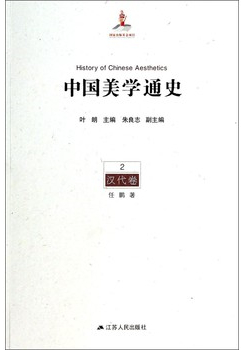Aesthetics throughout Chinese history

History of Chinese Aesthetics
Chief Editor: Ye Lang
Publisher: Jiangsu People’s Publishing LTD
History of Chinese Aesthetics represents the fruit of a massive undertaking that took a group of aestheticians from Peking University eight years to complete. The book is divided into eight volumes according to different time periods in Chinese history ranging from Pre-Qin times to modern China.
The book expanded the scope of what should be considered aesthetics literature. With the increase in archaeological discoveries in recent years, the study of bamboo and silk as a significant school of learning has provided new materials for the study of Chinese academic history. History of Chinese Aesthetics has made full use of these materials in a comprehensive and detailed way. Also, the group of authors utilized newly unearthed materials in the fields such as literature, philosophy, archaeology, history and bibliography. This is particularly evident in the volumes of the Han Dynasty (206 BC-AD 220), which provides necessary technical preparation for the re-emergence of the history of Chinese aesthetics as a contemporary academic hotspot.
The book included both aesthetic literature and specific artistic phenomena. Aesthetics is among the humanities, but it is also a theoretical discipline. As a branch of philosophy, aesthetics needs to strengthen its connection with philosophy to establish the professional and academic nature of the discipline. Meanwhile, it has to enhance its relationship with other practical, literary and artistic disciplines to break theoretical limitations. The authors did not rely solely on literature or research at a conceptual level, but investigated specific artistic phenomena. On the one hand, research and elaboration of specific artistic theories, such as those related to books, painting, literature, music and drama theories, are included in the field of aesthetic history; on the other hand, specific artistic phenomena and artistic creation are used to prove a theoretical point of view. It shows that the authors are not satisfied to state that aesthetics exists only as a pure philosophical discipline, instead offering a new research paradigm in future studies.
In addition, the book referenced the latest research results in overseas Sinology studies. Some of the authors posed many questions that are opposed to the classical way of thinking in the writing of Chinese aesthetic history after absorbing new ideas from research achievements in countries like the United States, Japan and other European countries, which promoted dialogue between aesthetics research and contemporary academic discourse.
This book comprises the work of more than a dozen writers. Despite their distinct personal styles and characteristics, the general layout of the book is clear and united as a whole. In particular, the authors’ styles should also be noted. Since the reform and opening up, driven by many young writers, there appeared a kind of obscure writing style that imitates the Western sentence forms, showing off concepts and terminology, while muddying the meanings. But History of Chinese Aesthetics maintained a clear style. This style of writing itself is a kind of beauty in nature, and it is also the kind of beauty with a sense of theoretical sincerity. The authors do not shun the slightest theoretical color between the lines. On the contrary, they approach theoretical issues by using the simplest language to make their points.
